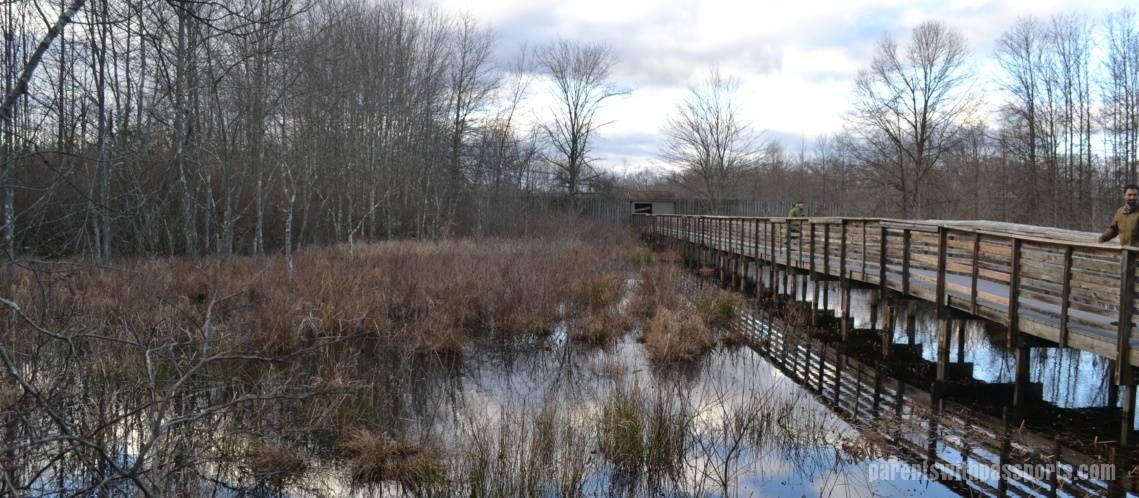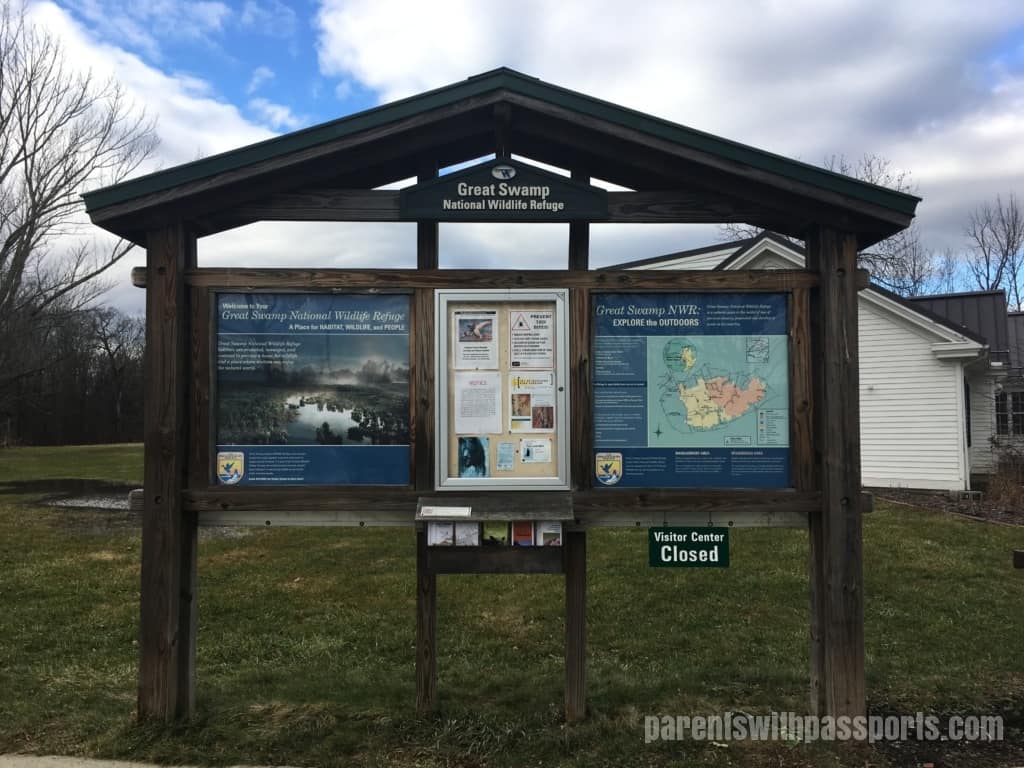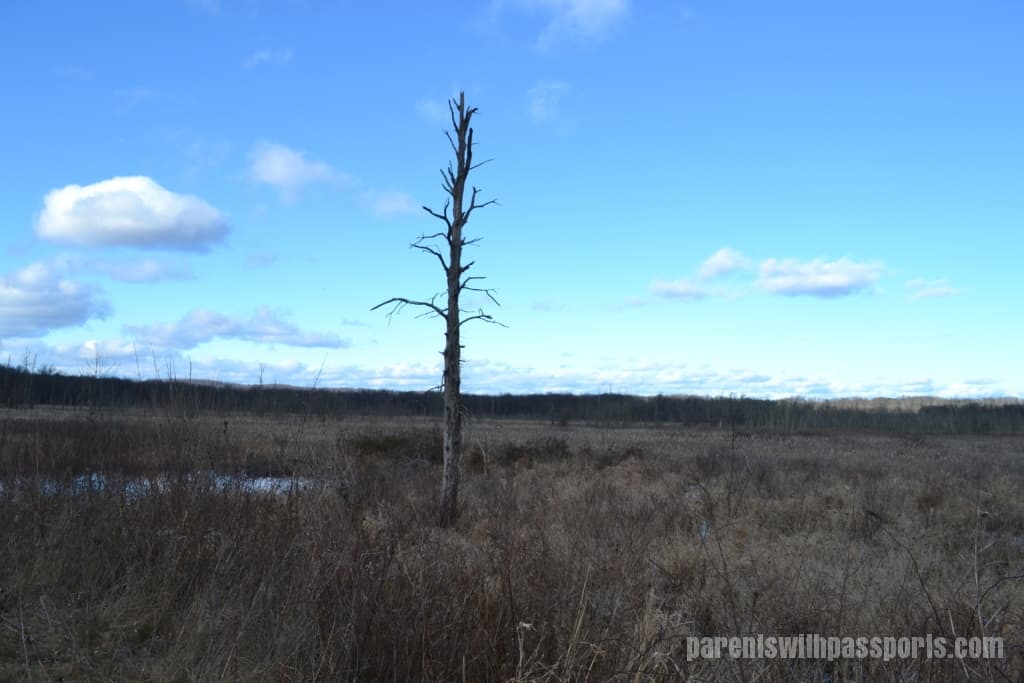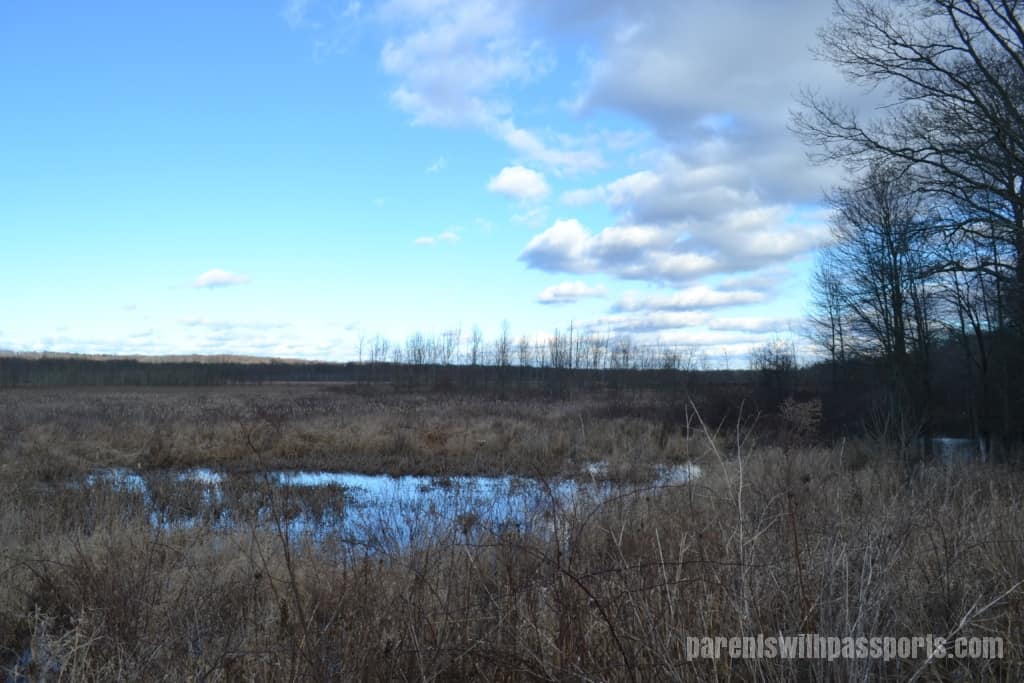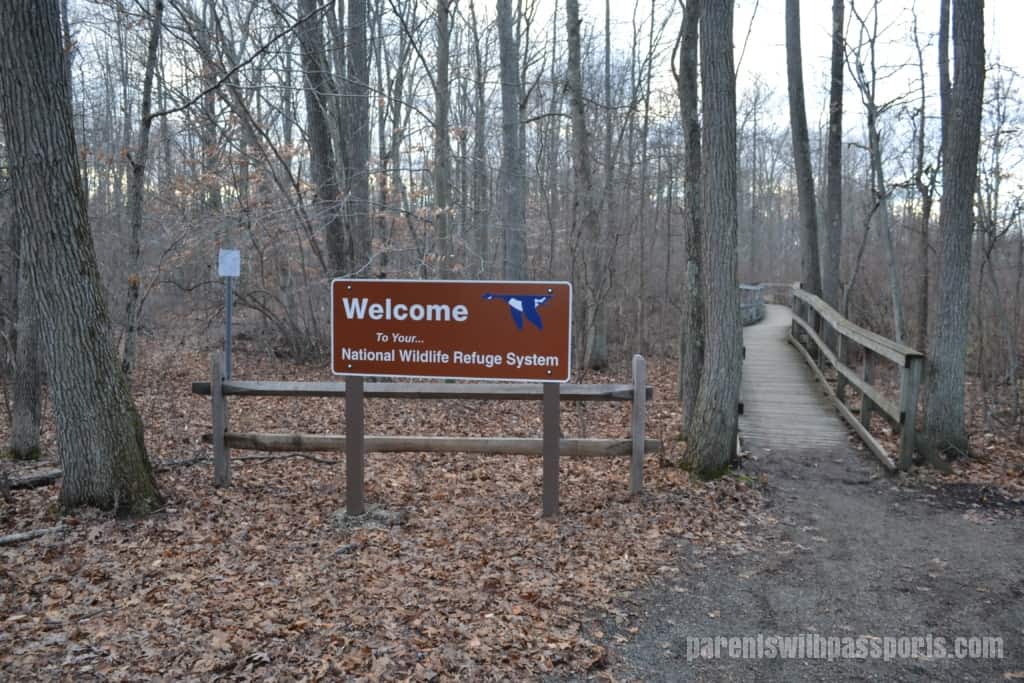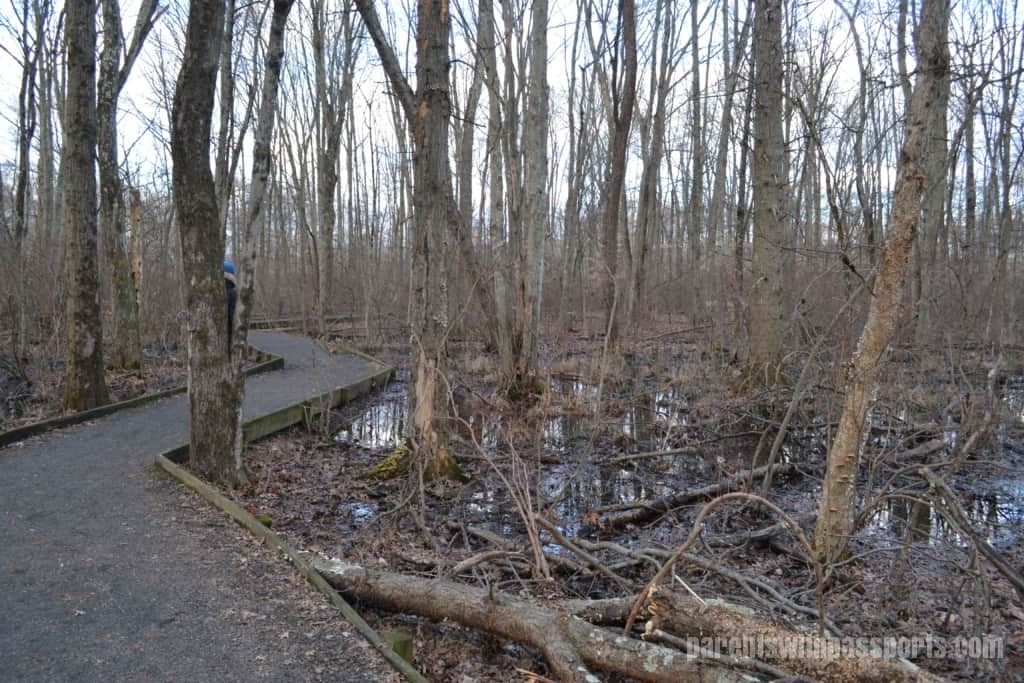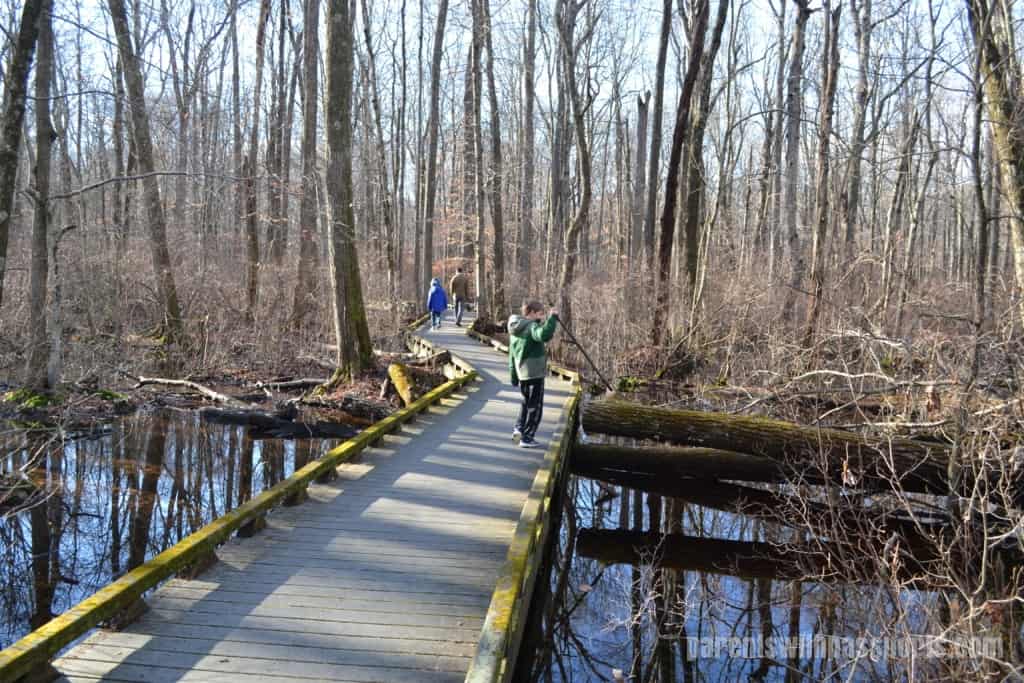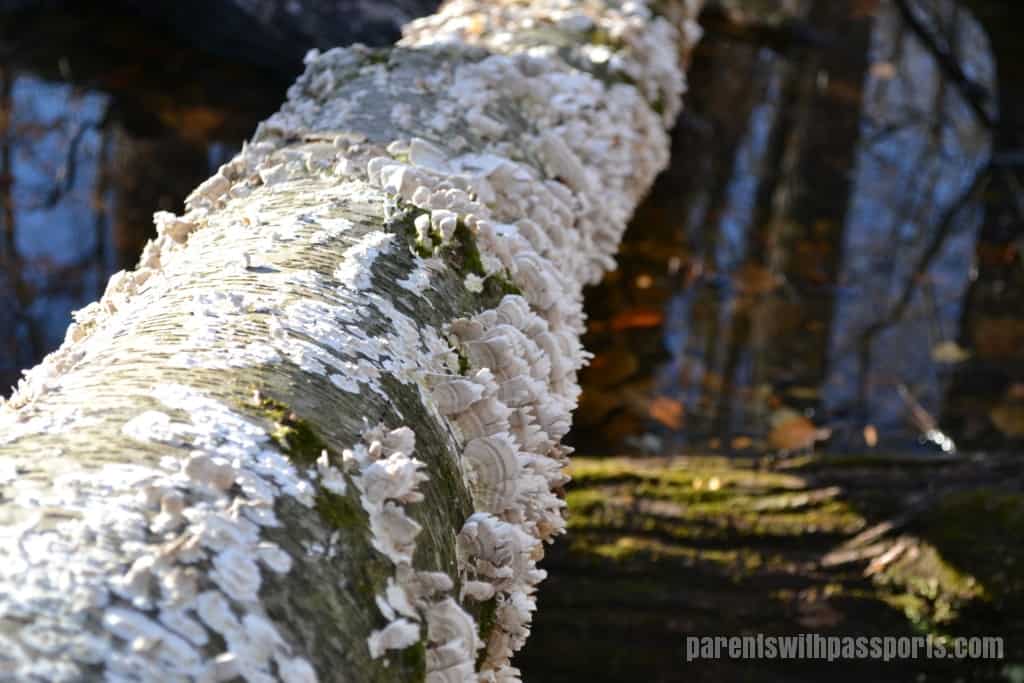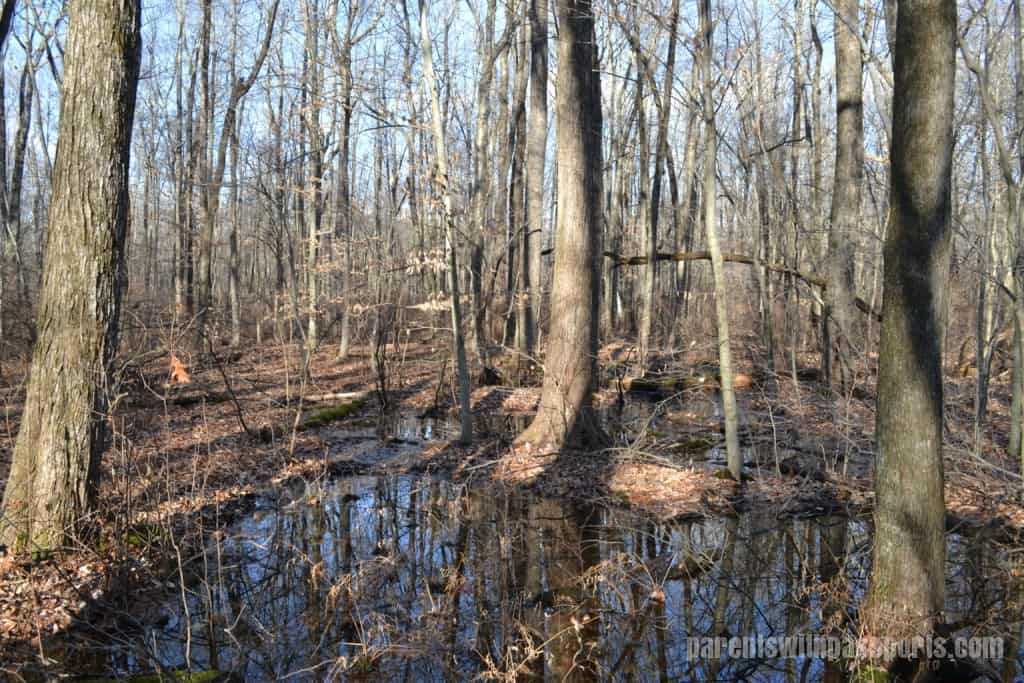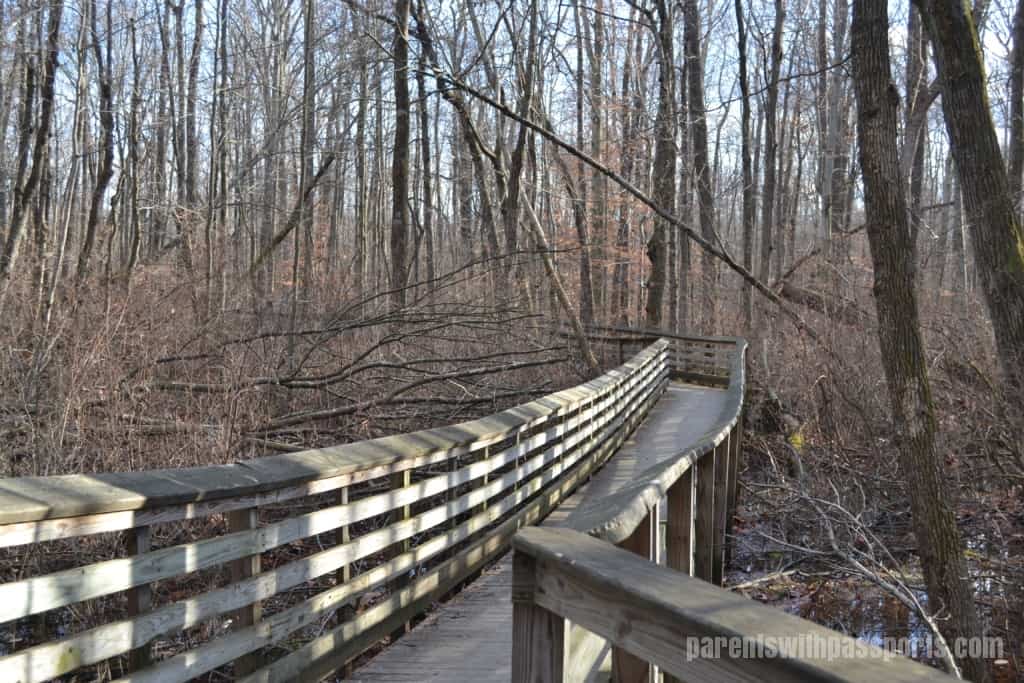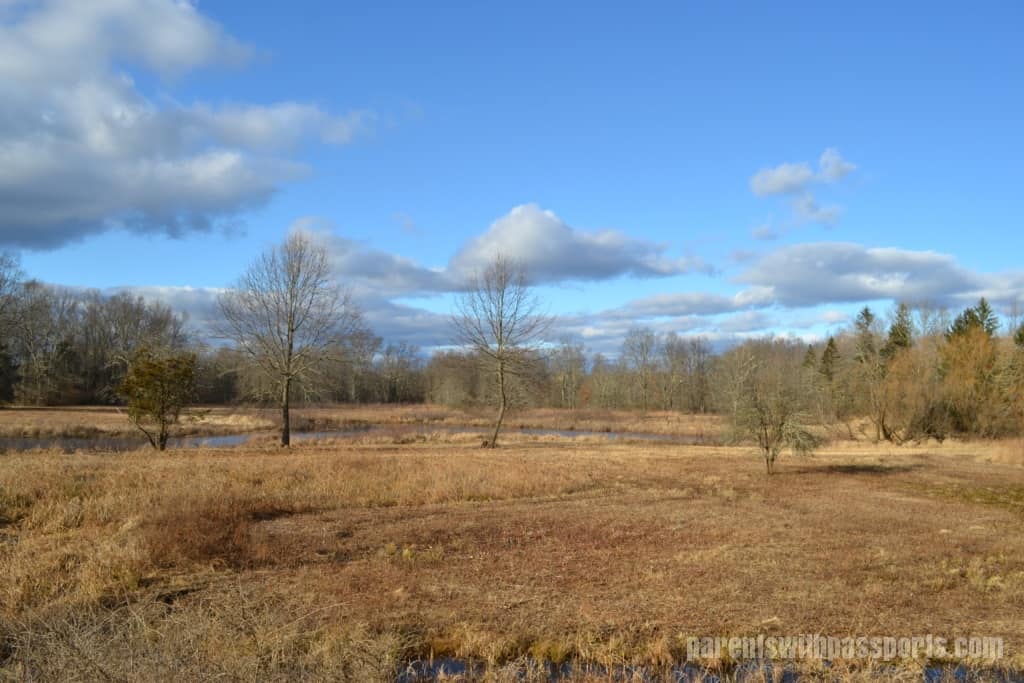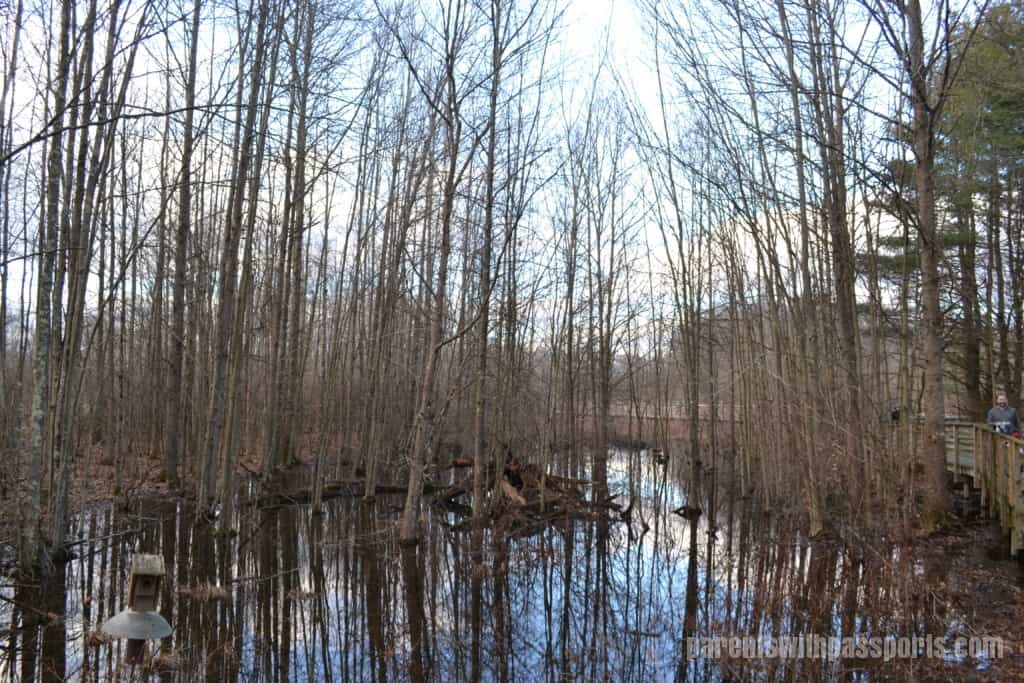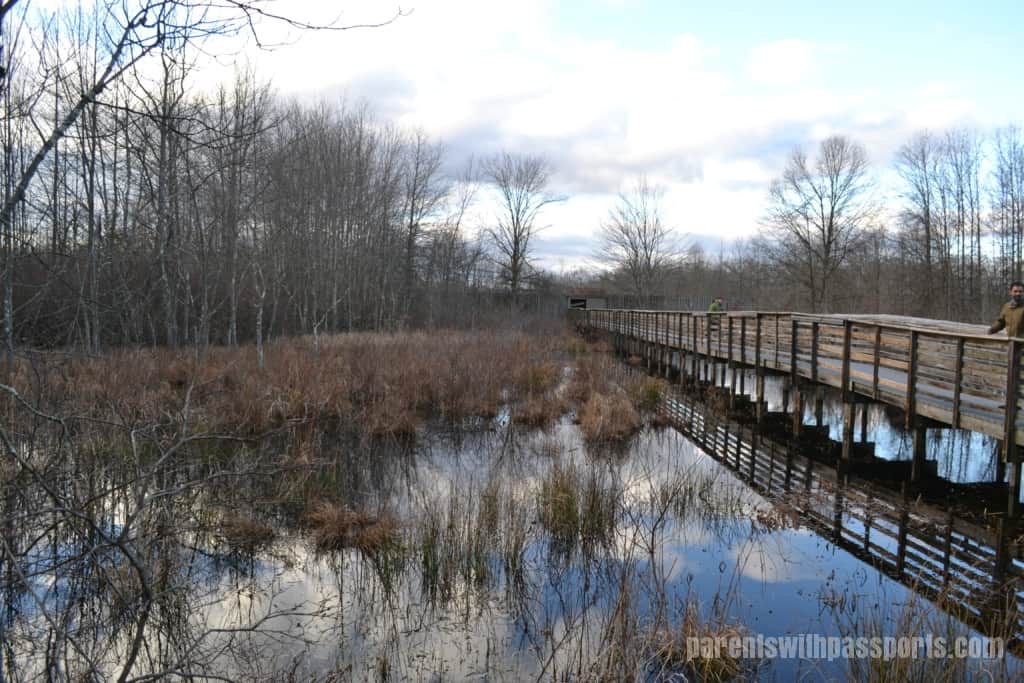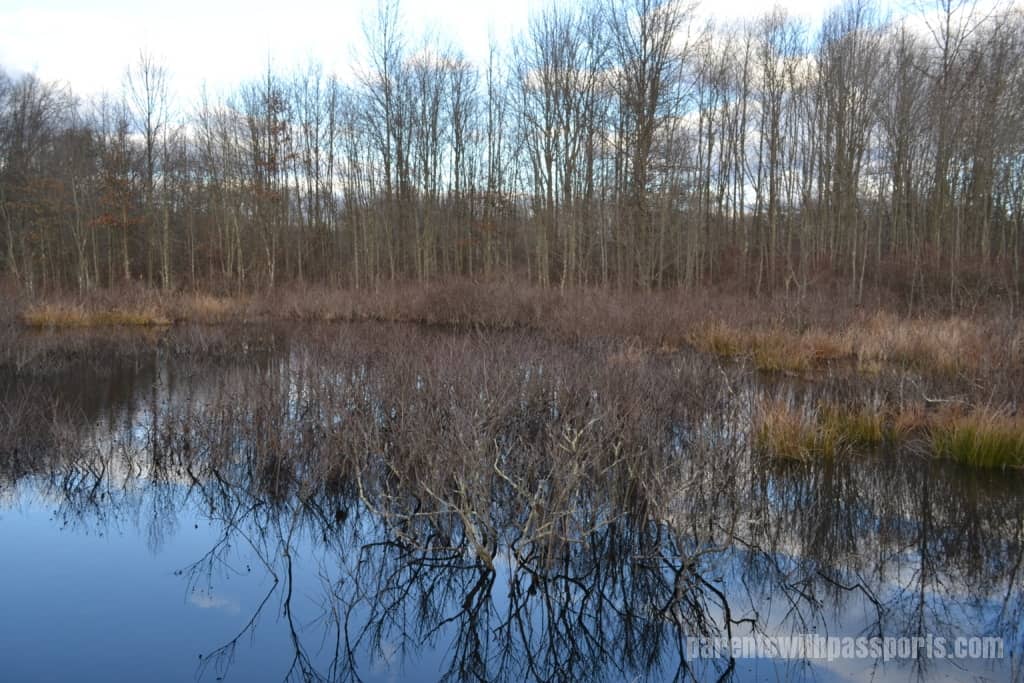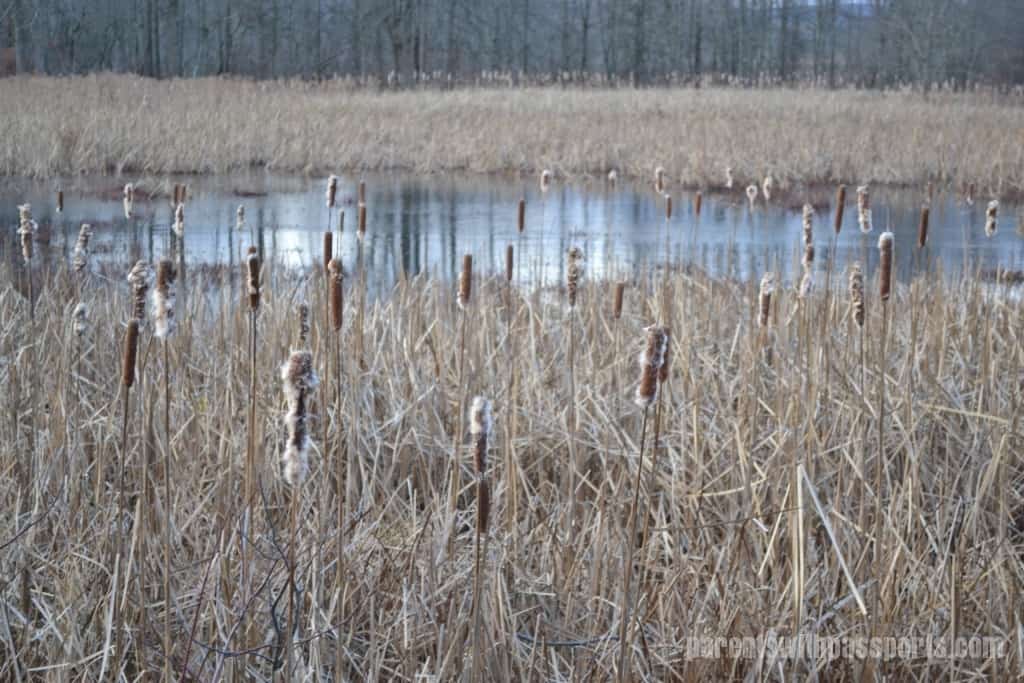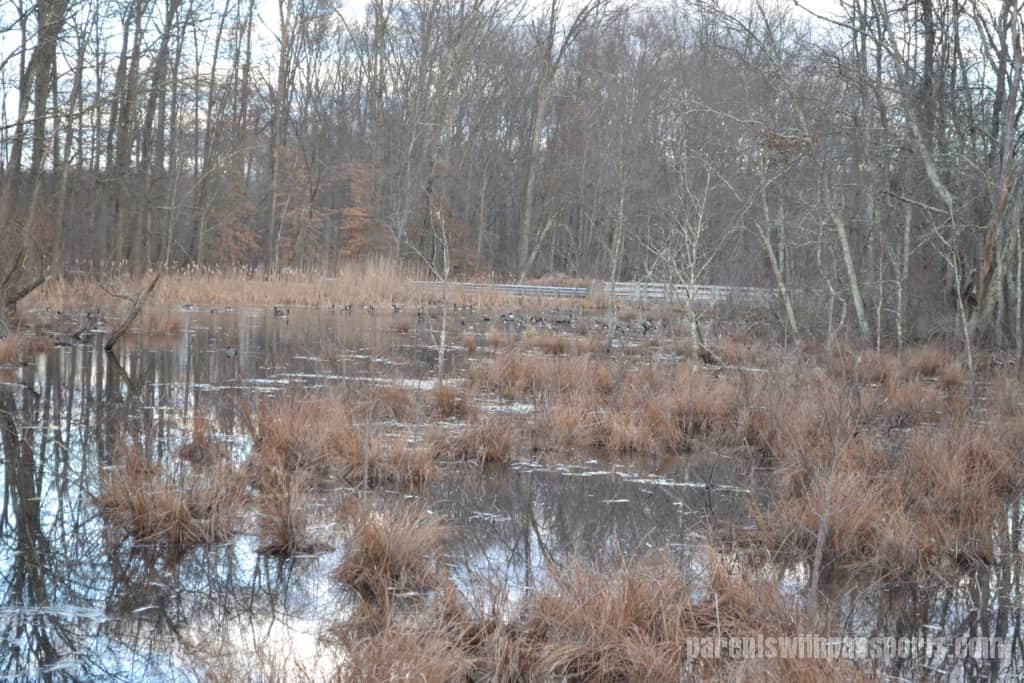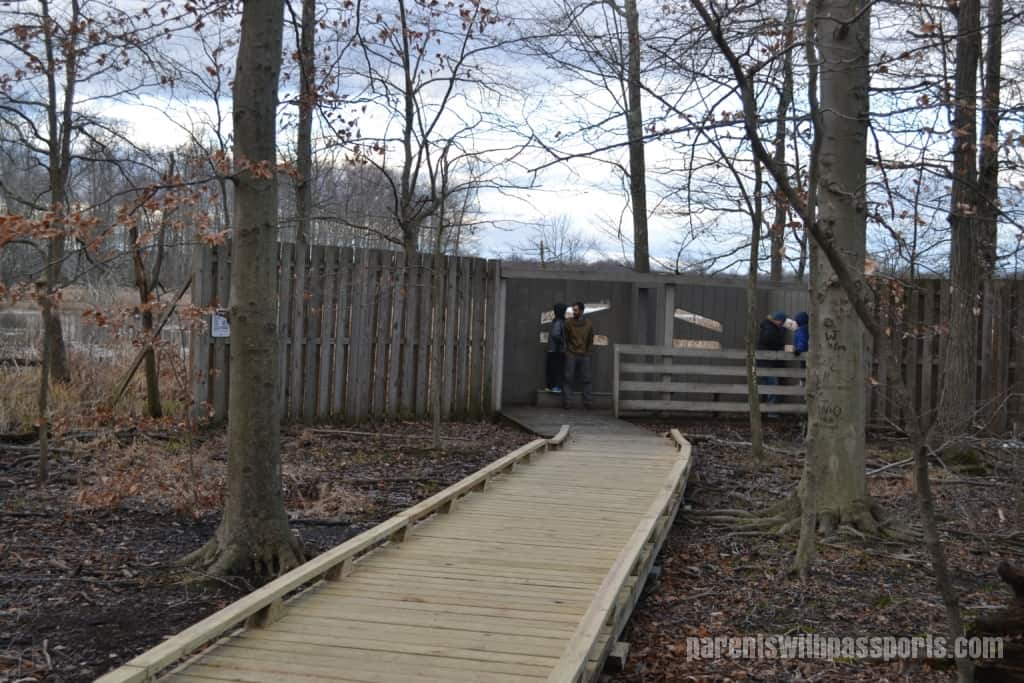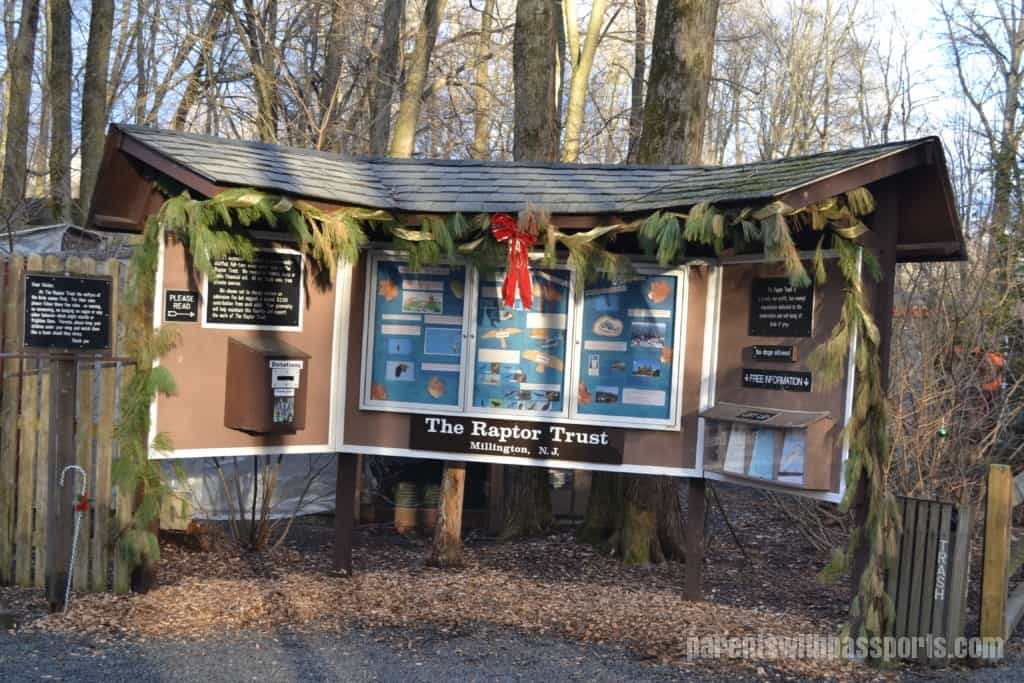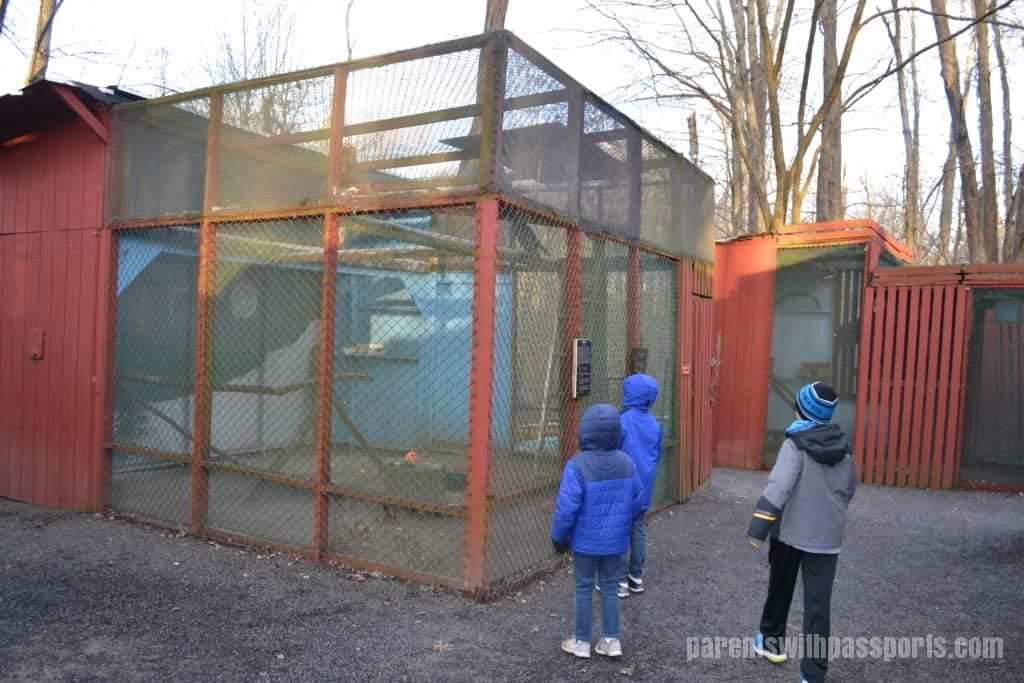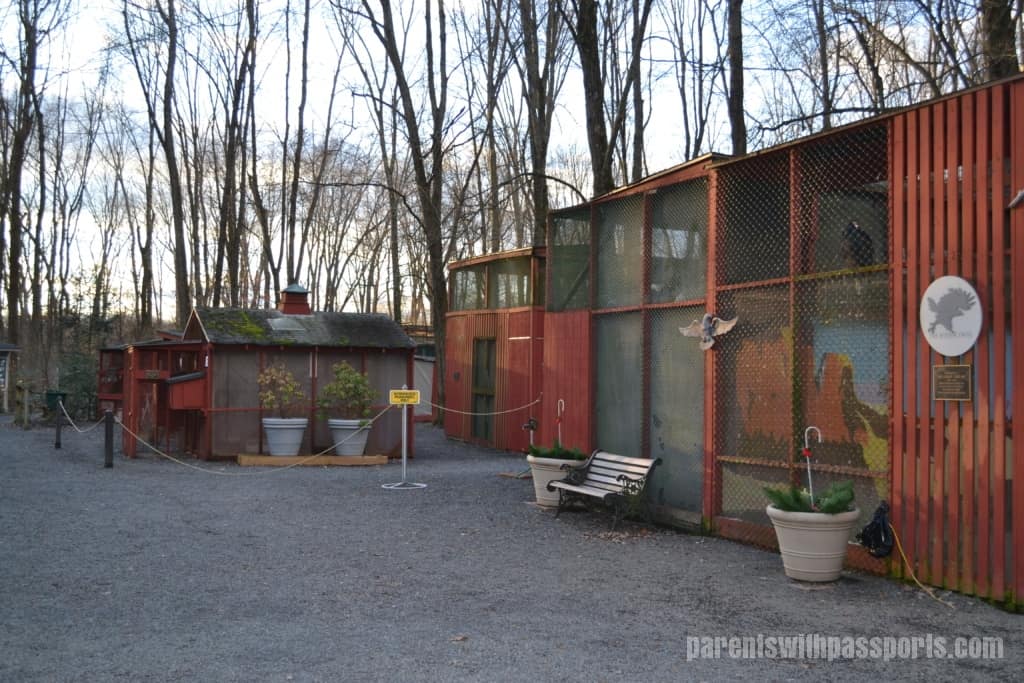We always head to NJ the day after Christmas to have our family holiday celebration at my parents’ house. Since we usually spend a few days, we try to find some sort of day trip to get the kids out of the house at some point. This year since weather was relatively mild, we were able to go on an outdoor adventure. Outdoor (non-snow) winter activities are tough to find in the NJ area but I had seen pictures online of the Great Swamp and thought it might be worth exploring.
Some 11,000 years ago, Great Lake Passaic was formed in this area when the Wisconsin Glacier melted. The swamp was created when the glacier’s melting water was rerouted at a higher elevation, causing the lake to drain and leaving behind over 7,500 acres of wetlands. The refuge itself was created in response to an attempt by the Port Authority of NY and NJ to purchase the land for an airport in 1960. Today, almost 250 species of birds have been spotted in the refuge (either as permanent residents or migratory visitors), as well as several dozen species of mammals, fish, reptiles and amphibians.
Getting there was a little harder than anticipated. The Great Swamp crosses into 10 different NJ towns, with many having frustratingly similar names like Morristown and Morris Township. It was really difficult to find an actual address to put into the GPS. There are many different parking lot and entry points but we couldn’t nail down a main entrance. We finally tracked down the address to the Helen C. Fenske Visitor Center and were able to make our way there. When we arrived we found this:
Yes, thanks to the federal government shutdown, all national parks were experiencing some level of closure over the holidays. At the Great Swamp, this meant that the visitor center was closed, restrooms were locked, and garbage cans were full. The trails were still open though so we grabbed a map and headed on our way.
Our plan was to drive from the visitor center to the Wildlife Observation Center and explore the trails from there. We stopped at an overlook along the way and were treated to some pretty views of the unique landscape. This must have been a popular birdwatching spot. There were a few telescopes installed and several people sitting in their cars, peering through the windshield with binoculars.
After spotting a few waterfowl in the distance, we got back in the car and continued to the Wildlife Observation Center. This area had two main trails – one loop and one out and back – that led to three wildlife blinds. All trails were on an elevated boardwalk or hard-packed gravel, making them accessible to both wheelchairs and strollers. Given the fact that it had recently rained quite a bit and that it was cold (making wet feet particularly undesirable), we only explored this area on this trip.
We took the loop trail to the Garden Club Blind first. This section of the trail was all boardwalk and crossed over both swampy areas and deeper water. This was a fairly heavily wooded area and, while pretty, didn’t seem like much beyond what you could see in your own backyard after a heavy rain.
The view from the wildlife blind was beautiful though. The open field you can observe through the long narrow windows is home to many species of Northeastern feeder birds. Due to the time of year, we didn’t see much wildlife, but the view was still worth the walk.
From there we completed the loop and headed to the two other blinds on the out and back trail. It was a lot swampier on this section and we saw several nests among the reeds in the water, if not any birds. (Again, the weather and time of year were working against us.)
From there we continued along the path to the Friends Blind. We crossed over a large body of water where we had our first and only wildlife spotting – ducks! It was disappointing that the only wildlife we saw on this walk was within view of a highway; this was the only part of the trail that didn’t seem isolated from the surrounding towns and it seemed ironic that the ducks congregated here instead of deeper in the refuge.
This final section of the path was primarily on fine gravel through deciduous woods. The Friends Blind was a more open structure than the others and is known to be a good spot for viewing deer feeding on the grasses.
The roundtrip walk to all three blinds is approximately 2 miles. It’s easy terrain and very kid friendly. Despite warning the kids that we most likely would not see wildlife because it was winter, JB was disappointed that we didn’t see anything. (He thought surely HE would be able to spot some wildlife, even if nobody else could.) But the boys still enjoyed the walk. It was nice to get outside after a couple of rainy days and lots of indoor Christmas festivities (and to walk off some of the Christmas cookies we ate). I would definitely like to go again in another season. I’m sure it’s gorgeous in the fall with the changing colors and exciting in the spring with more active wildlife. (There is an otter on the front page of their website that JB is dying to track down…)
We also made a quick stop at The Raptor Trust that was just down the street. The trust is a nonprofit that serves as a rehabilitation center for injured birds of prey. We arrived only about 15 minutes before it closed so we just took a quick walk through the center. There were a good variety of birds on display and the boys enjoyed getting up close to different owls, hawks, and eagles. Although we were able to get through the whole center in 15 minutes, I would allow yourselves 30-45 minutes to have enough time to view all the raptors without being rushed.
